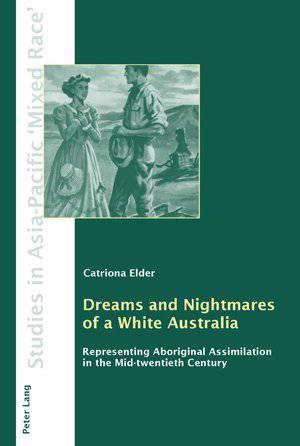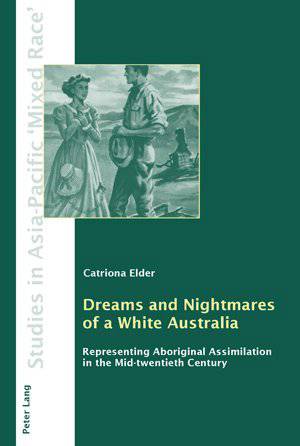
- Afhalen na 1 uur in een winkel met voorraad
- Gratis thuislevering in België vanaf € 30
- Ruim aanbod met 7 miljoen producten
- Afhalen na 1 uur in een winkel met voorraad
- Gratis thuislevering in België vanaf € 30
- Ruim aanbod met 7 miljoen producten
Zoeken
Dreams and Nightmares of a White Australia
Representing Aboriginal Assimilation in the Mid-Twentieth Century
Catriona Elder
€ 77,95
+ 155 punten
Omschrijving
By the mid-twentieth century the various Australian states began changing their approaches to Aboriginal peoples from one of exclusion to assimilation. These policy changes meant that Aboriginal people, particularly those identified as being of mixed heritage, were to be encouraged to become part of the dominant non-Aboriginal community - the Australian nation.
This book explores this significant policy change from a cultural perspective, considering the ways in which assimilation was imagined in literary fiction of the 1950s and 1960s. Drawing on novels from a range of genres - the Gothic, historical romance, the western and family melodrama - it analyses how these texts tell their assimilation stories.
Taking insights from critical whiteness studies the author highlights both the pleasures and anxieties that the idea of Aboriginal assimilation raised in the non-Aboriginal community. There are elements of these assimilation stories - maternal love, stolen children, violence and land ownership - that still have an impact in the unsettled present of many post-colonial nations. By exploring the history of assimilation the author suggests ideas for a different future.
This book explores this significant policy change from a cultural perspective, considering the ways in which assimilation was imagined in literary fiction of the 1950s and 1960s. Drawing on novels from a range of genres - the Gothic, historical romance, the western and family melodrama - it analyses how these texts tell their assimilation stories.
Taking insights from critical whiteness studies the author highlights both the pleasures and anxieties that the idea of Aboriginal assimilation raised in the non-Aboriginal community. There are elements of these assimilation stories - maternal love, stolen children, violence and land ownership - that still have an impact in the unsettled present of many post-colonial nations. By exploring the history of assimilation the author suggests ideas for a different future.
Specificaties
Betrokkenen
- Auteur(s):
- Uitgeverij:
Inhoud
- Aantal bladzijden:
- 260
- Taal:
- Engels
- Reeks:
- Reeksnummer:
- nr. 3
Eigenschappen
- Productcode (EAN):
- 9783039117222
- Verschijningsdatum:
- 2/03/2009
- Uitvoering:
- Paperback
- Formaat:
- Trade paperback (VS)
- Afmetingen:
- 150 mm x 220 mm
- Gewicht:
- 409 g

Alleen bij Standaard Boekhandel
+ 155 punten op je klantenkaart van Standaard Boekhandel
Beoordelingen
We publiceren alleen reviews die voldoen aan de voorwaarden voor reviews. Bekijk onze voorwaarden voor reviews.











